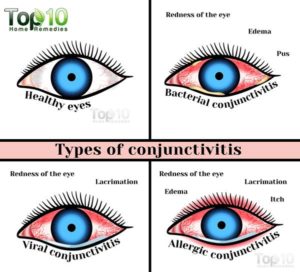Conjunctivitis (Pink Eye)
Conjunctivitis, also known as pink eye, is an infection or inflammation of the conjunctiva – the thin, protective membrane that covers the surface of the eyeball and inner surface of the eyelids. Caused by bacteria, viruses, allergens and other irritants like smoke and dust, pink eye is highly contagious and is usually accompanied by redness in the white of the eye and increased tearing and/or discharge.
While many minor cases improve within two weeks, some can develop into serious corneal inflammation and threaten sight. If you suspect conjunctivitis, visit your eye care provider at Dr. Mark Sorrentino, O.D. for an examination and treatment.
 There are three types of conjunctivitis:
There are three types of conjunctivitis:
- Viral conjunctivitis – This type of conjunctivitis is caused by a virus, like the common cold. This pink eye is very contagious, but usually will clear up on its own within several days without medical treatment.
- Bacterial conjunctivitis – This type of conjunctivitis is caused by bacteria. It can cause serious damage to the eye if left untreated.
- Allergic conjunctivitis – This type of conjunctivitis is caused by eye irritants such as pollen, dust and animal dander among susceptible individuals. Allergic conjunctivitis may be seasonal due to pollen or flare up year-round due to dust or pet dander.